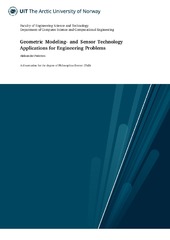| dc.contributor.author | Wollscheid, Sabine | |
| dc.contributor.author | Tømte, Cathrine Edelhard | |
| dc.contributor.author | Egeberg, Gunstein Christoffer | |
| dc.contributor.author | Karlstrøm, Henrik | |
| dc.contributor.author | Fossum, Lone Wanderås | |
| dc.date.accessioned | 2024-08-29T08:33:39Z | |
| dc.date.available | 2024-08-29T08:33:39Z | |
| dc.date.issued | 2024-08-15 | |
| dc.description.abstract | The purpose of this study is to map trends in literature about digital school leadership over the last decades. Combining bibliometric and automatic content analyses, we map and analyze a sample of 350 documents, retrieved in Web of Science (WoS), Scopus and Education Resources Information Center (ERIC) including titles and abstracts. The software VosViewer and Leximancer are used for analyses. Our sample is divided reflecting an early phase of digitalization in school (1992–2009), a phase of an increasing digitalization in school (2010–2020) and a phase of digitalization related to the Covid-19 pandemic (2021–2023). In general, the research literature on digital school leadership can be characterized as an emerging, fragmented, and inter-disciplinary field. Most literature is published after 2010 with an increase in publications after 2019, resulting in a peak in 2021. The literature is characterized by some influential highly connected authors revealing some changing thematic patterns over time. Further, findings highlight that when research on digital school leadership draws from various disciplines, this also indicates a need for a holistic and multifaceted approach. Scholars from different disciplines contribute to an updated understanding of digital school leadership. This interdisciplinary collaboration thus enriches the discourse, as it demonstrates how various perspectives may add new insights into the conceptualization of digital school leadership. | en_US |
| dc.identifier.citation | Wollscheid, Tømte, Egeberg, Karlstrøm, Fossum. Research trends on digital school leadership over time: Science mapping and content analysis. Education and Information Technologies : Official Journal of the IFIP technical committee on Education. 2024 | en_US |
| dc.identifier.cristinID | FRIDAID 2287236 | |
| dc.identifier.doi | 10.1007/s10639-024-12909-3 | |
| dc.identifier.issn | 1360-2357 | |
| dc.identifier.issn | 1573-7608 | |
| dc.identifier.uri | https://hdl.handle.net/10037/34449 | |
| dc.language.iso | eng | en_US |
| dc.publisher | Springer Nature | en_US |
| dc.relation.journal | Education and Information Technologies : Official Journal of the IFIP technical committee on Education | |
| dc.rights.accessRights | openAccess | en_US |
| dc.rights.holder | Copyright 2024 The Author(s) | en_US |
| dc.rights.uri | https://creativecommons.org/licenses/by/4.0 | en_US |
| dc.rights | Attribution 4.0 International (CC BY 4.0) | en_US |
| dc.subject | VDP::Samfunnsvitenskap: 200::Biblioteks- og informasjonsvitenskap: 320::Bibliometri : 324 | en_US |
| dc.subject | VDP::Social sciences: 200::Library and information science: 320::Bibliometrics: 324 | en_US |
| dc.subject | VDP::Samfunnsvitenskap: 200::Biblioteks- og informasjonsvitenskap: 320 | en_US |
| dc.subject | VDP::Social sciences: 200::Library and information science: 320 | en_US |
| dc.title | Research trends on digital school leadership over time: Science mapping and content analysis | en_US |
| dc.type.version | publishedVersion | en_US |
| dc.type | Journal article | en_US |
| dc.type | Tidsskriftartikkel | en_US |
| dc.type | Peer reviewed | en_US |


 English
English norsk
norsk



